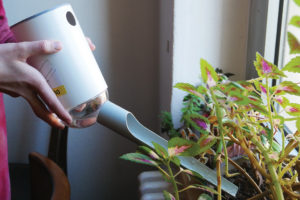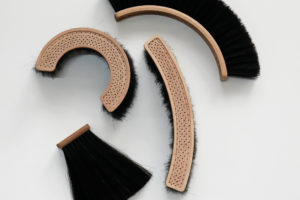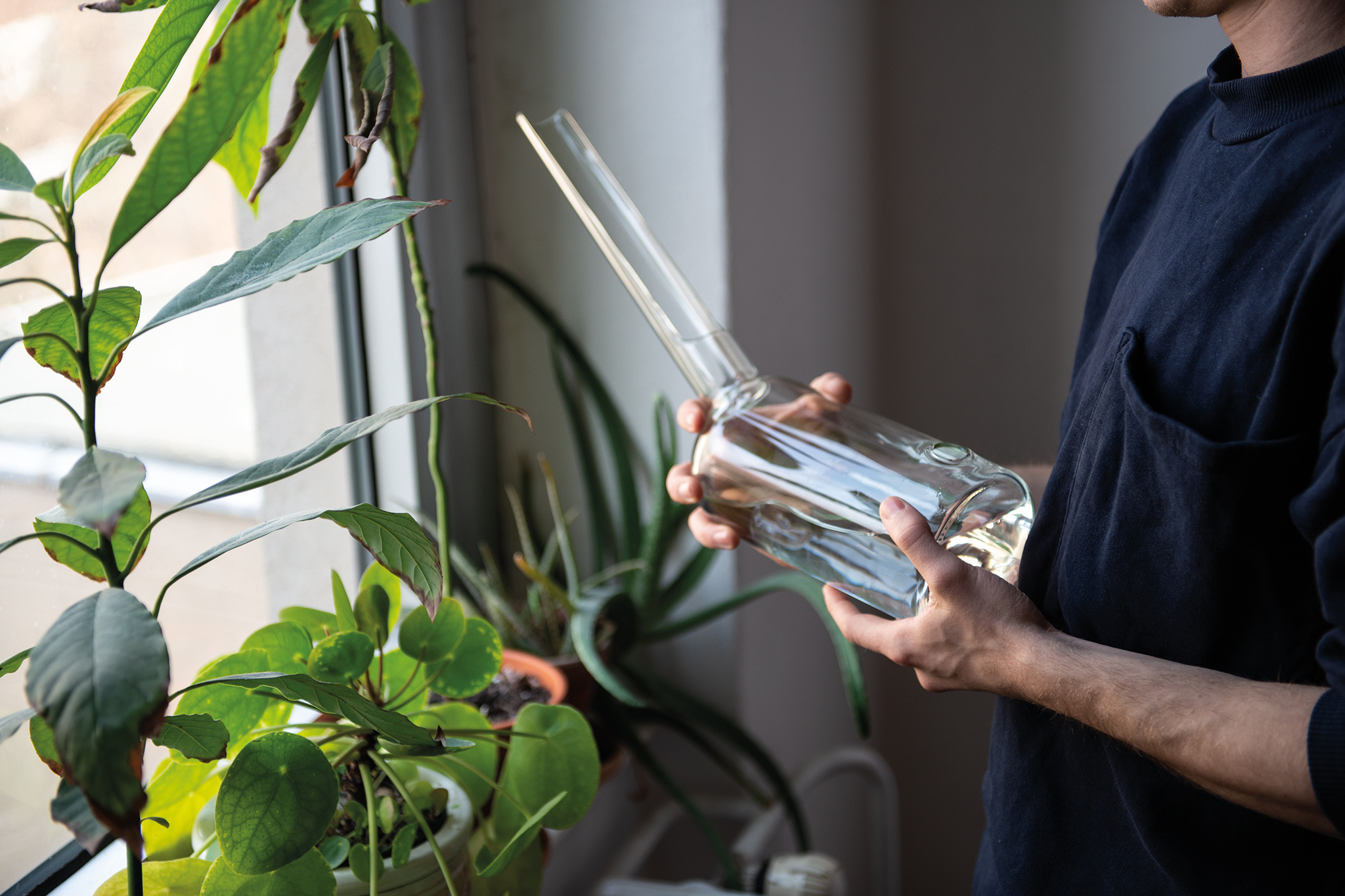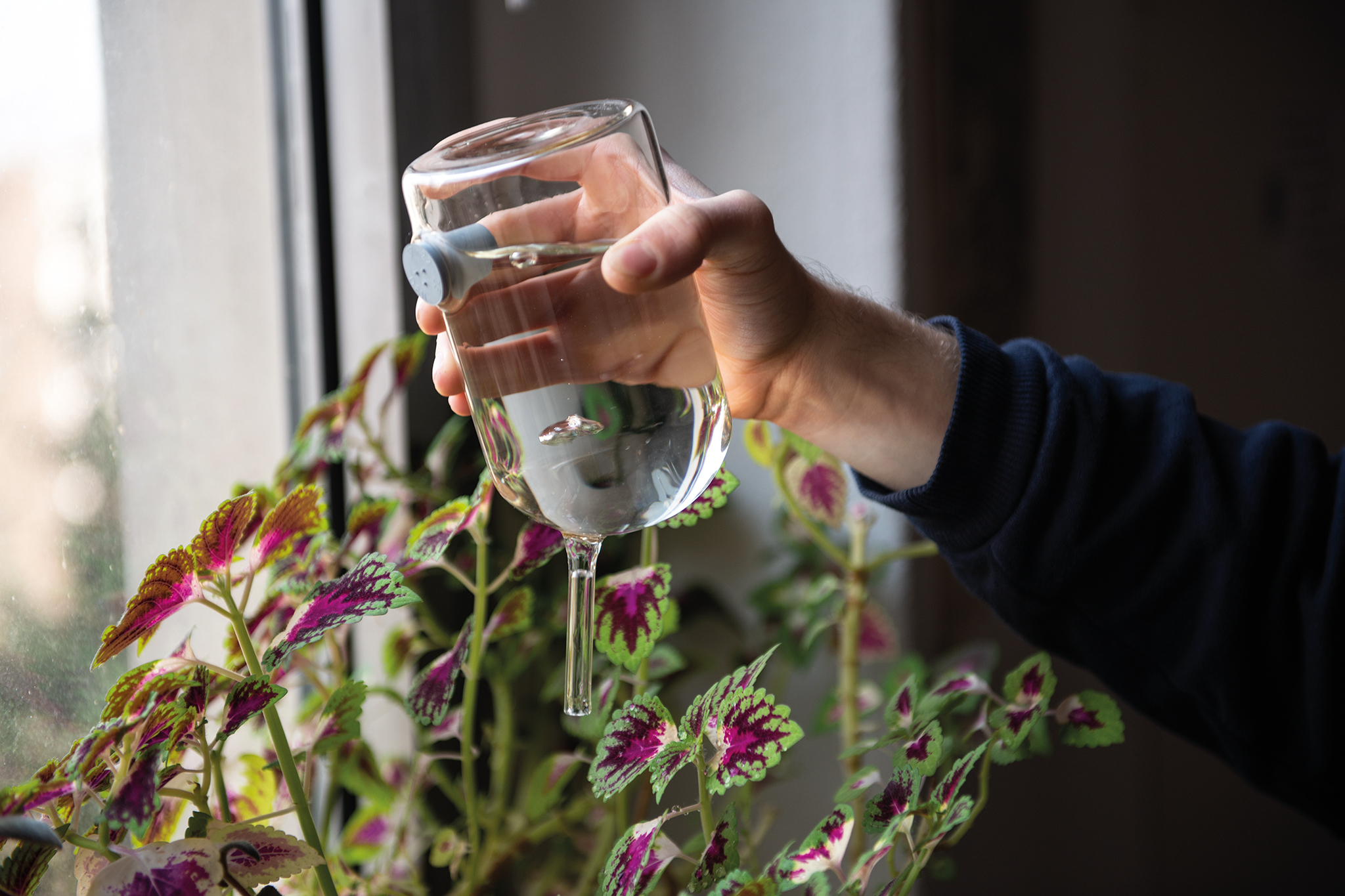DAS TUN AN SICH | Bachelorarbeit 2021
nicht ganz effektive Objekte für die meditative Praxis zu Hause
Die sechs Objekte sind das Ergebnis der Beschäftigung mit der Frage, wie man durch Objekte den Handlungsprozess vor das Ergebnis stellen kann und sich somit beim Tun vom bloßen Erreichen eines Ziels oder Ergebnisses freimachen kann.
Alltägliche Tätigkeiten, wie das Feges eines Raumes und das Gießen der Zimmerpflanzen werden durch Nutzung der Objekte so verändert, dass sich der Fokus vom Ziel auf den Ablauf verschiebt. So bieten sie Anlass zu einer Auseinandersetzung mit leistungsorientiertem Handeln und hinterfragen übliche Annahmen über die Funktionalität und Effizienz von Abläufen. Mit den Besen kann man fegen und mit den Gießkannen kann man gießen, es funktioniert nur etwas anders als man es gewohnt ist.
Das Wasser muss sich seinen Weg durch den Ausguss der Kannen bahnen. Das geht nicht so direkt wie bei einer herkömmlichen Gießkanne. Es nimmt einen Umweg, aber einen ästhetischen, denn es entstehen Schlangenlinien und Luftblasen, die man betrachten kann während man steht und innehält. Befüllen muss man die Kannen langsam und auch der Weg vom Wasserhahn zur Pflanze ist am besten vorsichtig. Die Materialität unterstützt die bewusste und konzentrierte Handhabung.
Die Besen sind weniger fragil in der Benutzung. Sie ermöglichen große und kleine Bewegungen, mal mehr, mal weniger frei und repetitiv. Die Repetition kann eine meditative Wirkung herbeiführen. In jedem Fall dauert das Fegen des Raumes. In der Wiederholung der Bewegung eröffnet sich die Möglichkeit zum Vergleich und zu erhöhter Konzentration auf die Tätigkeit. Wie bewege ich mich und wie den Besen? Da nehme ich einmal mehr Schwung und einmal weniger. Was verändert sich? Die Bewegungen sind nicht kompliziert, aber sie benötigen doch eine achtsame Zuwendung. Einfach nebenbei machen geht nicht.
The six objects are the result of the occupation with the question of how objects can be used to place the process of action before the result and thus free oneself from the mere achievement of a goal or result when doing.
Everyday activities, such as sweeping a room and watering houseplants, are altered through the use of objects in such a way that the focus shifts from the goal to the process. In this way, they provide an occasion for an examination of performance-oriented action and question common assumptions about the functionality and efficiency of processes. You can sweep with brooms and water with watering cans, it just works a little differently than you’re used to.
The water has to make its way through the spout of the cans. It doesn’t do that as directly as it does with a traditional watering can. It takes a detour, but an aesthetic one, because it creates serpentine lines and bubbles that you can look at while standing and pausing. Filling the cans must be done slowly, and the path from the faucet to the plant is also best done carefully. The materiality supports deliberate and concentrated handling.
The brooms are less fragile in use. They allow for large and small movements, sometimes more, sometimes less free and repetitive. The repetition can induce a meditative effect. In any case, sweeping the room takes time. In the repetition of movement, the opportunity for comparison and increased concentration on the activity opens up. How do I move myself and how the broom? I use more momentum at one time and less at another. What changes? The movements are not complicated, but they do require attentive attention. Simply doing it on the side is not possible.
Prozess









Betreut durch
Prof. Ineke Hans, Prof. Holger Neumann, Annika Unger
Kontakt




















